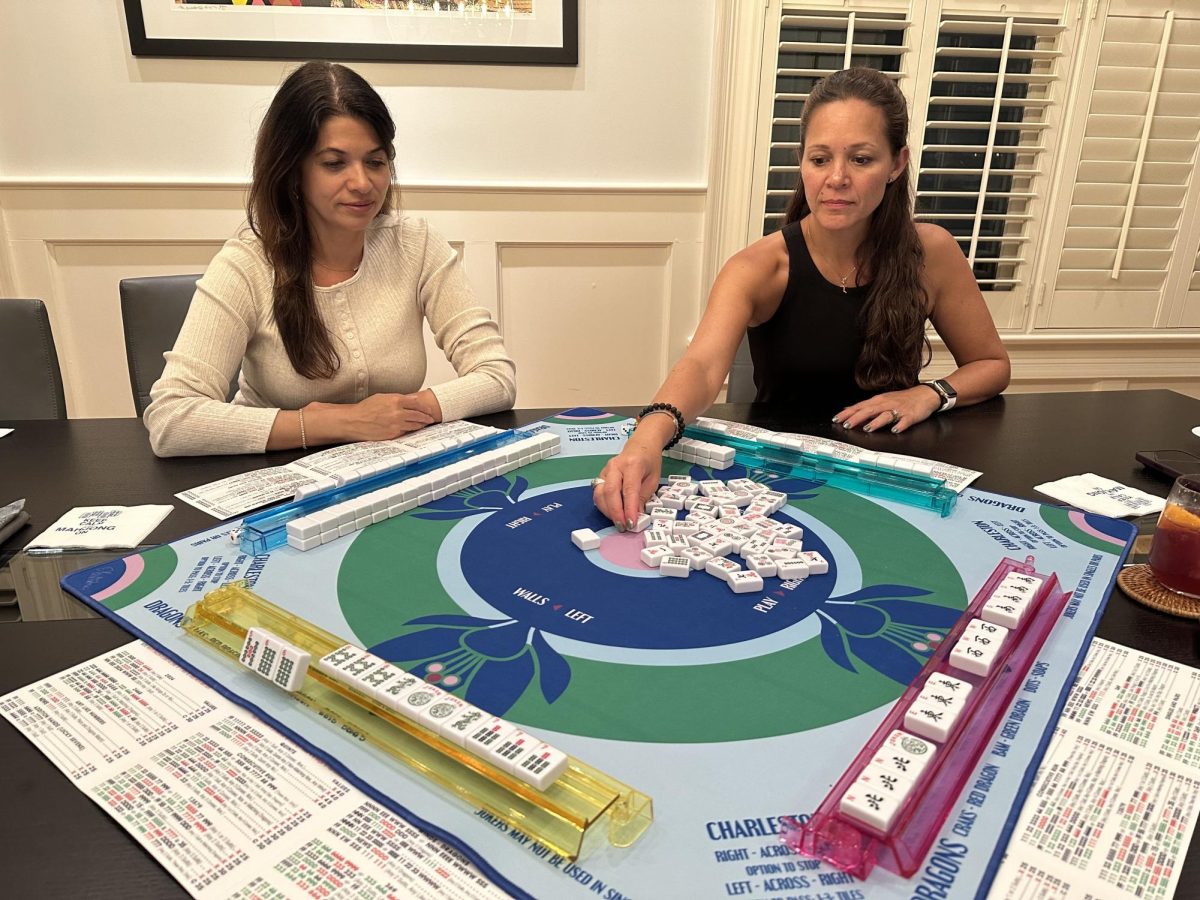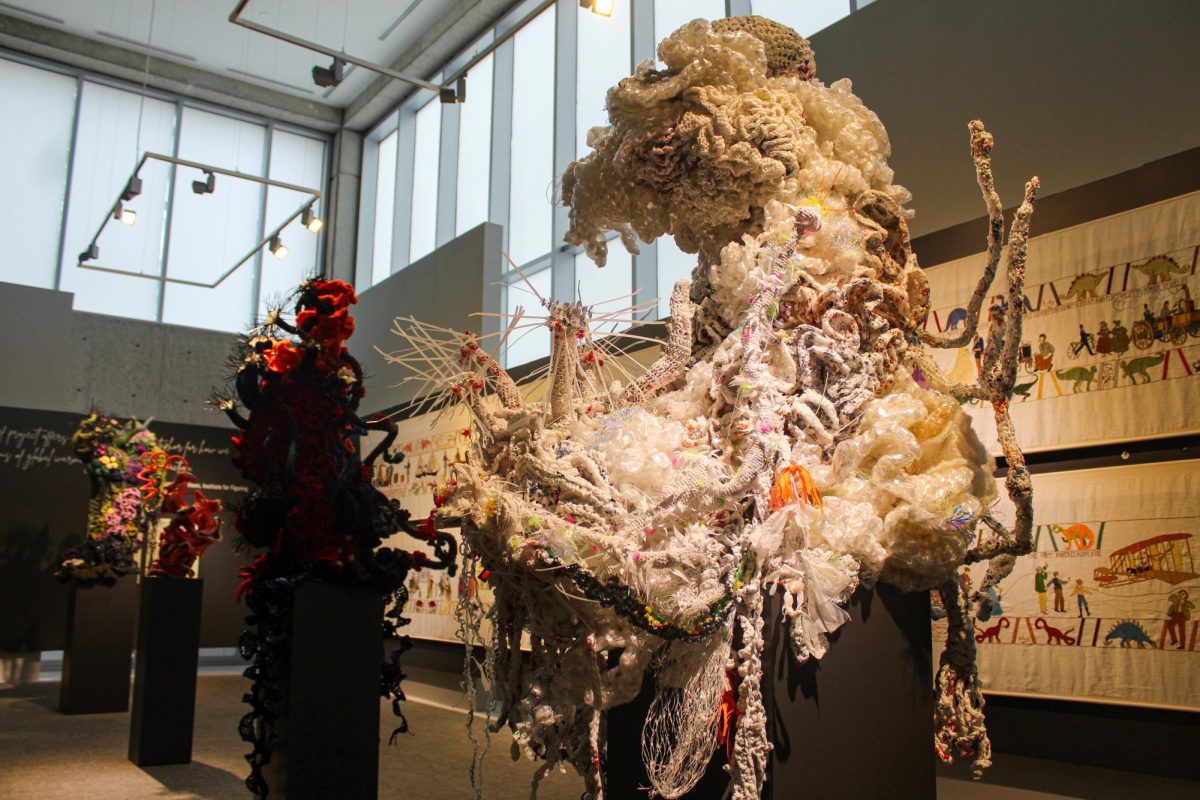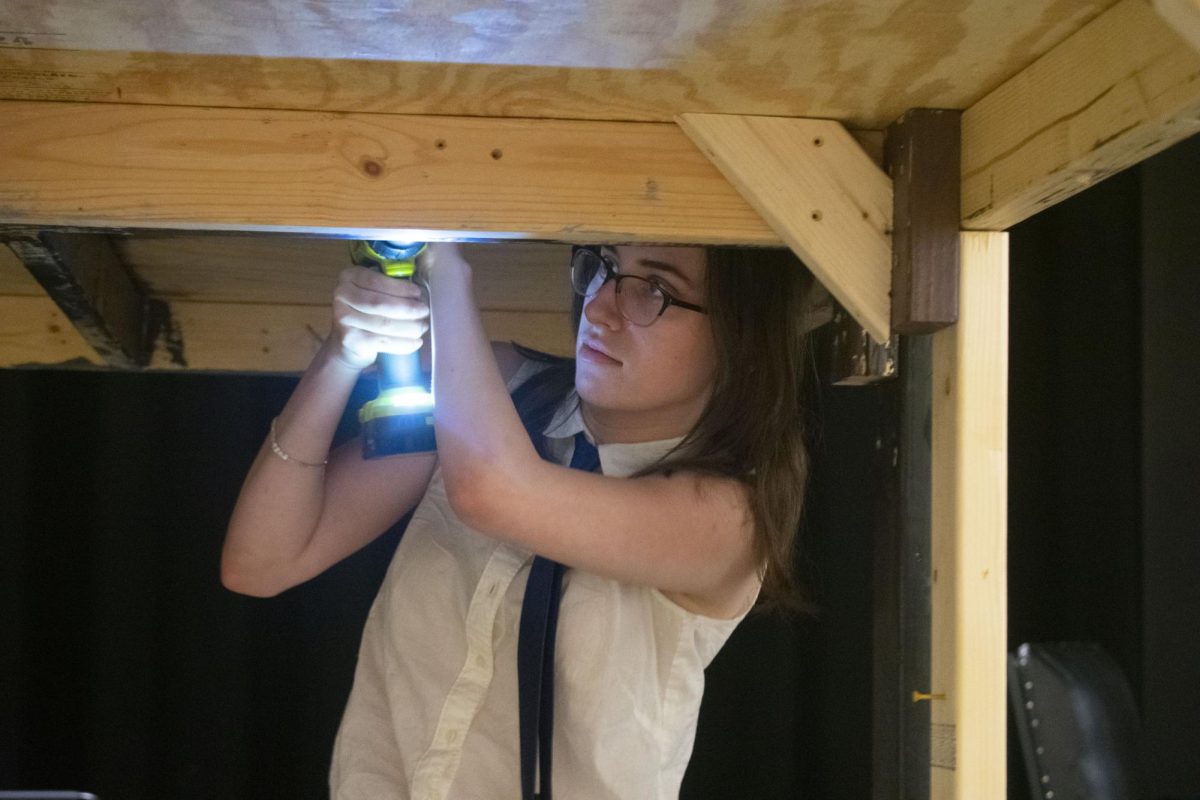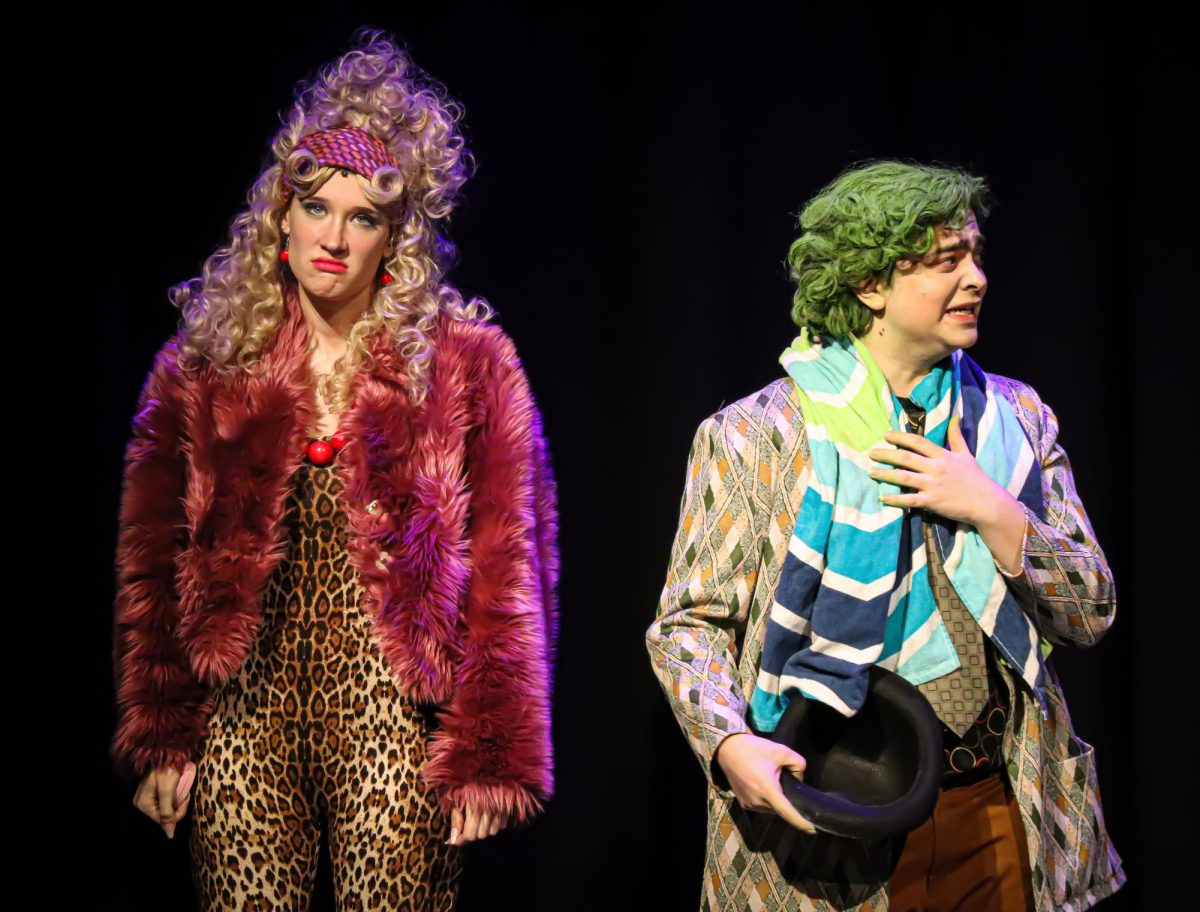What do you get when you cross a fashion designer, a sculptor, and a 3D printer? Iris van Herpen, of course.

The High Museum’s “Iris van Herpen: Transforming Fashion” allows Atlantans to view a bevy of Dutch fashion designer Iris van Herpen’s most avant-garde work. The exhibit showcases 45 outfits from 15 of the designer’s collections.
Iris van Herpen, widely regarded as a pioneer of contemporary fashion, avoids the major fashion hubs of New York, London, Paris and Tokyo. Instead, the designer bases her business in Amsterdam. Despite her relative isolation from the fashion world, van Herpen’s boundary-pushing designs led her to become an honorary member of the Cambre Syndicale de Haute Couture, and she shows her collections in Paris for spring and fall runway shows.
Van Herpen draws inspiration from nearly everything but fashion, and makes garments from nearly everything but fabric. Industrial smoke inspired her second collection, which she constructed with a material woven from fine metal threads. Ethical quandaries associated with genetic engineering inspired another series of dresses, many of which are 3D printed from a rubber-like material.
“Manifesting abstract ideas onto clothing is the mark of a good designer,” van Herpen said in a talk at the High Museum on Nov. 8.
The exhibit showcases several garments from all but one of van Herpen’s collections — items from Quaquaversal, her Spring/Summer 2016 collection, remain absent due to logistical difficulties. Visitors to the museum can see the progression of van Herpen’s work. Her debut collection, entitled Chemical Crows, is entirely hand-constructed from industrial yarn, leather and childrens’ umbrella ribs, while her spring 2015 ready-to-wear collection includes a 3D printed dress made from transparent photopolymer and stereolithography resin.
“I started by doing everything by hand,” van Herpen said. “Technology wasn’t a very large part of the project. … But as a person, I’m very much focused on the here and the now.”
Her designs, however, occasionally eclipse the capabilities of modern technology.
Van Herpen created dresses that resemble water for her 2010 Crystallization collection. In one such piece, a splash of “water” seems to envelop a white leather dress. Van Herpen’s interdisciplinary training at the ArtEZ Institute of the Arts Arnhem aided her when she learned that 3D printing technology was not yet refined enough to make the dress to her standards. She then sought to make the dress by hand, and after nearly 40 failed attempts, found a material suitable for her project. Using a hot air gun, van Herpen molded a sheet of polyethylene terephthalate — a material often used in plastic bottles — to resemble a splash of water.
“I always have fantasies of working with materials I cannot work with,” van Herpen said. “To be able to transform a material into something else is one of the most magical processes there is.”

Though the designer takes advantage of technology for many of her garments, a large proportion of them remain handmade. She said that, contrary to popular opinion, many of her more futuristic designs are handmade, while the more organic garments are often 3D printed.
For years, van Herpen dreamed of making a transparent “ice dress,” but could not find a suitable material. 3D printing companies told her outright that her design would fail because there was no way to print a transparent material. Yet van Herpen refused to relent. She worked with Italian architect Niccolò Casas to prepare her design for printing. In an attempt to make the dress transparent, the printers shined an ultraviolet light upon liquid polymer. This process, known as stereolithography, allowed a design to appear when the material hit light, hardening it layer by layer. The finished dress, which debuted in van Herpen’s Spring/Summer 2015 collection, looks as though it is constructed from ice in just the way she envisioned it would.
Many of van Herpen’s designs are sculptural. Her dresses lie on the avant-garde side of couture, and while few of them are overtly “wearable,” they juxtapose her more ready-to-wear pieces.
“I like exploring the space around the body as much as I like exploring the space directly near the body,” van Herpen said.
In a Nov. 12 talk, the exhibition’s curator, Sarah Schleuning, said that collaborations — oftentimes with architects — have allowed van Herpen’s avant-garde designs to come to fruition.
“She transitioned from being much more insular, a maker in her atelier in the Netherlands, to opening herself up to collaborations,” Schleuning said.
In 2010, van Herpen collaborated with Daniel Widrig and Materialise to construct a 3D printed top reminiscent of a mollusk shell. This top was the first 3D printed garment to be worn in a runway show.
Several years later, she created a dress inspired by the spires and flying buttresses of gothic cathedrals, working with an architect to carefully adapt every inch of her design to 3D systems. The finished dress appears to be carved from wood and attracted a flurry of attention when shown in Paris. Van Herpen said that “everyone wanted to see the ‘wooden dress.’’’
“I make fashion, but I’m not necessarily inspired by fashion,” van Herpen said. “Because of that, collaborations are very important to me.”
To ensure that the exhibition reflected the designer’s multifaceted approach to fashion, the High’s Head of Museum’s Interpretation and Digital Engagement, Julia Forbes, pieced together a 10-minute biographical video about van Herpen. Forbes also helped create a film that shows footage from van Herpen’s last six runway shows.
Schleuning and Forbes anticipated that viewers would be frustrated with their inability to touch van Herpen’s dimensional materials, and so they worked to create a petting zoo of sorts. Visitors to the exhibit have the opportunity to feel samples of several of the designer’s most dynamic fabrics.
This interactive feature may have contributed to the exhibit’s popularity among young people.
“We have also had a lot of interest from elementary and middle school students through our very popular STEAM [Science, Technology, Engineering, Art, and Mathematics] tours,” Forbes said. “Iris van Herpen is the perfect designer around whom to talk about STEAM. She touches on almost all of the elements”
Van Herpen’s designs mark a turning point in fashion, one in which traditional garment-making techniques become intertwined with futuristic technologies. Though the exhibition closes on May 16, 2016, Schleuning acquired two of van Herpen’s most futuristic dresses and one pair of shoes for the High’s permanent collection.


















